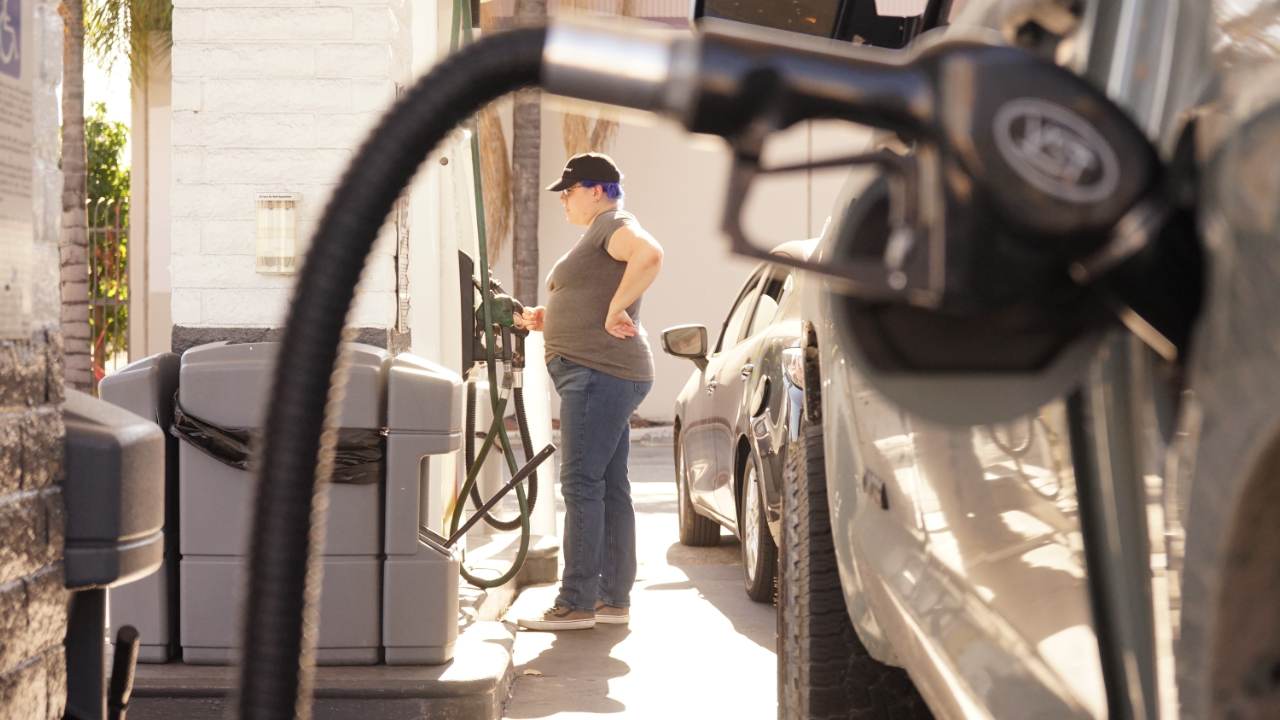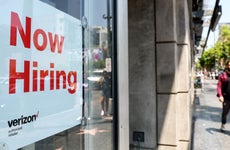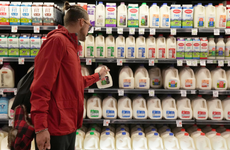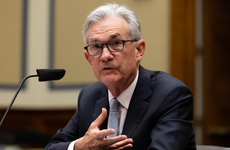Survey: Experts predict another year of decades-high inflation

The Bankrate promise
At Bankrate we strive to help you make smarter financial decisions. While we adhere to strict , this post may contain references to products from our partners. Here's an explanation for .
Elevated inflation isn’t going away, but price pressures will hopefully reach their peak this year, according to a new survey from Bankrate.
After inflation in 2021 soared to heights that Americans haven’t witnessed for decades, economists in Bankrate’s Fourth-Quarter Economic Indicator poll were evenly split over whether price gains over the course of this year will turn out to be as expected (40 percent) or more significant (40 percent).
How either of those projections play out depends on the ongoing pandemic, lingering supply chain disruptions and whether employers can fill their vacant positions — conditions that risk keeping consumer prices high for years to come, with some virus-fragile sectors impacted more than others.
Just two respondents (13 percent) in Bankrate’s poll said consumers can expect prices to soar less than expected in 2022.
“Inflation is likely at or near its peak now, given energy prices are falling and the supply chain has started to untangle,” says Robert Frick, corporate economist at the Navy Federal Credit Union. “However, supply chain issues will continue well into next year, and while they should be mostly resolved, their effects may continue into 2023.”
Forecasts and analysis:
This article is the second in a three-part series analyzing findings from Bankrate’s Fourth-Quarter Economic Indicator poll:
- Economists see unemployment sinking to near 50-year low in 2022
- Experts predict another year of decades-high inflation
- 93% of economists see the Fed lifting rates more than once in 2022
Why inflation isn’t slowing down
The coronavirus pandemic is the root of today’s elevated inflation pressures.
Outbreaks forced factories and manufacturing plants to shutter both nationwide and abroad, while lingering fears about catching the virus at work have kept many of the 2.4 million Americans who are missing from the labor force on the sidelines. That’s weighed on the global economy’s production capacity, and global goods shortages have been just as contagious to supply chains as the virus itself. Virtually all items that wind up in the hands of consumers have had to make their way through a mangled and clogged supply chain.
Consumers up until now have also had elevated personal savings rates thanks to three direct federal stimulus checks and elevated unemployment benefits, while borrowing costs have also been at their lowest levels in history. All of that’s combined to incentivize robust consumer spending, especially when pent-up vaccinated Americans first emerged from coronavirus-induced lockdowns.
As a result, inflation has now soared to its highest level in decades, with two separate gauges of prices showing price pressures rising at the fastest rate since 1982.
The only problem is inflation has broadened out beyond just the pandemic-impacted sectors. Fuel, gasoline, energy, dairy, meats and used vehicle prices have led the charge, skyrocketing into the double digits from a year ago.
“It’s difficult to predict when supply chain disruptions may resolve, particularly because supply chains are so interconnected, and the pandemic remains a threat in the coming year,” says Odeta Kushi, deputy chief economist at First American Financial Corporation. “Labor shortages may ease in some industries as some workers are enticed by higher wages, but transportation logjams and material shortages may take time to clear up. Similarly, housing inflation will be both a significant driver of overall inflation and will linger longer than other transitory factors.”
New fears from the Omicron variant risk squeezing supply chains even more, and they could also keep workers out of the labor pool for longer. Many employers are also raising wages to recruit more workers, but companies have the wherewithal to hike prices for the first time in decades, as consumers come to expect that inflation is here to stay.
The risk is that those price pressures become more sustained and entrenched in the economy — with or without the virus.
“Inflation should decelerate, but it is still unclear how fast that will be,” says Joel Naroff, president of Naroff Economics. “Businesses are gearing up for solid price increases in 2022, so expect inflation to be in the 3 percent range. That may be lower than it has been, but higher than markets and the Fed expects.”
Federal Reserve officials in their December 2021 projections penciled in elevated inflation through at least 2024, though those price gains should peak in 2022 and moderate back down closer to policymakers’ average 2 percent target. Yet, that’s not stopping officials from penciling in at least three rate hikes for 2022 and three more for 2023 — which could also help bring price pressures back down.
When will inflation slow? Here’s what the experts are saying

Supply chain concerns will remain elevated as worker shortages persist. This will put upward pressure on inflation until outbreaks are contained globally. As these factors cool, other components of inflation, particularly housing and medical costs, will be rising, as people resume their canceled non-elective procedures and catch up on missed appointments. Skyrocketing housing and rental prices in 2021 will take a while to work into the inflation indices, so we will be seeing those into late 2022.
— Yelena Maleyev, economist, Grant Thornton

It will take more than six months to solve the supply chain issues, and the pandemic could be another major factor. Inflation will continue until the end of summer 2022. By that time, supply chain [disruptions] and the pandemic are more likely to be under control.
— Tenpao Lee, Ph.D, professor emeritus, Niagara University

Inflation could peak in the first quarter of 2022 but will remain elevated at least until the second half of 2023. Supply chain disruptions from this pandemic are likely to linger into 2023, while a fully employed economy keeps inflation pressures high.
— Scott Anderson, chief economist, Bank of the West/BNP Paribas Group

I hope that inflation is in the process of peaking now. These are very high metrics, but the question is how long inflation will linger and at what level. I expect 3-plus percent inflation to become stubborn. There will be a wage price spiral and that will make eradicating inflation harder.
— Robert Brusca, chief economist, Fact and Opinion Economics

Peak inflation will vary greatly by industry. An industry-by-industry analysis will be critical to a clear understanding of price pressures across the economy. A single aggregate measure is likely to be misleading and lead to policy mistakes.
— Robert Hughes, senior research fellow, American Institute for Economic Research
Methodology
The Fourth-Quarter 2021 Bankrate Economic Indicator Survey of economists was conducted Dec. 13-20. Survey requests were emailed to economists nationwide, and responses were submitted voluntarily online. Responding were: Scott Anderson, executive vice president and chief economist, Bank of the West; Scott J. Brown, chief economist, Raymond James Financial; Ryan Sweet, senior director of economic research, Moody’s Analytics; Gregory Daco, chief U.S. economist, Oxford Economics; Yelena Maleyev, associate economist, Grant Thornton LLP; Odeta Kushi, deputy chief economist, First American Financial Corporation; Robert Frick, corporate economist, Navy Federal Credit Union; Tenpao Lee, professor emeritus, Niagara University; Robert Hughes, senior research fellow, American Institute for Economic Research; Kathryn Anne Edwards, economist, RAND Corporation; Robert A. Brusca, chief economist, Fact and Opinion Economics; Joel L. Naroff, president, Naroff Economics; John E. Silvia, founder and president, Dynamic Economic Strategies; Bill Dunkelberg, chief economist, National Federation of Independent Business; Mike Englund, chief economist, Action Economics; and Bernard Markstein, president and chief economist, Markstein Advisors.
Related Articles

Survey: Economists predict jump in unemployment and job losses over next 12 months

Survey: More than half of economists say surging inflation will climb much higher than expected


Survey: Increasing number of top economists now expecting Fed rate hike over coming year